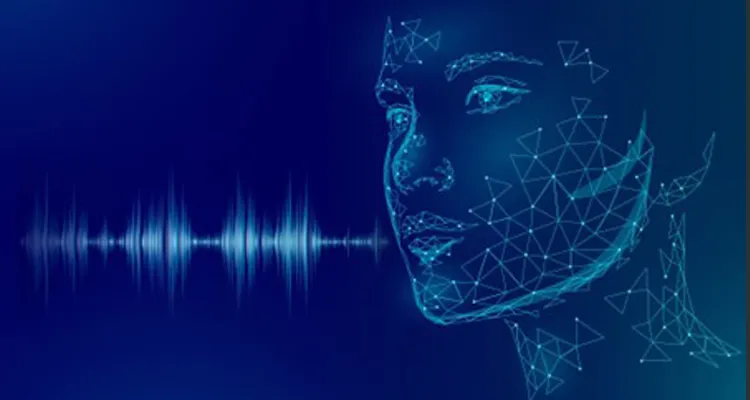Introduction
Speech recognition, also known as automatic speech recognition (ASR), is the technology that enables machines to understand and process human speech into written text. Once considered futuristic, it now powers voice assistants, real-time captions, transcription tools, and smart devices. Thanks to advancements in artificial intelligence and deep learning, speech recognition systems have become highly accurate and more accessible than ever.
This technology is transforming industries like healthcare, customer service, education, and even personal productivity. Whether you’re saying “Hey Siri” or dictating a report, speech recognition plays a crucial role behind the scenes. In this guide, we’ll explore how it works, key factors influencing its accuracy, ethical considerations, the latest trends, and real-world applications.
1. What Is Speech Recognition and How Does It Work?
Speech recognition systems are built on complex algorithms that analyze and convert spoken language into text. The process typically involves the following components:
- Acoustic Modeling: Breaks down audio input into phonemes, the smallest units of sound.
- Language Modeling: Uses context to predict the correct sequence of words.
- Decoding: Combines audio and language models to generate accurate transcription.
Modern systems use deep learning, specifically recurrent neural networks (RNNs), convolutional neural networks (CNNs), and transformer-based models, to improve recognition speed and accuracy.
Older systems required speaker-dependent models—trained specifically on one voice. Today’s speaker-independent models can understand a wide variety of voices out-of-the-box, including different accents and dialects.
2. What Affects the Accuracy of Speech Recognition?
Speech recognition accuracy depends on several technical and environmental factors:
Audio Quality
High-quality microphones and clean audio inputs improve recognition. Background noise, echo, or muffled speech can reduce accuracy.
Accent and Dialect
Different accents or regional dialects may result in misinterpretation. Some systems allow users to “train” the software, improving results with continued use.
Speech Clarity
Clear enunciation, steady pacing, and avoidance of filler words contribute to better accuracy.
Context and Vocabulary
Models trained on specific industries (like medical or legal transcription) yield higher accuracy due to better vocabulary understanding.
Real-Time Feedback
Allowing users to correct mistakes helps systems learn and improve over time.
Today’s best systems can achieve over 95% word accuracy, with some domain-specific solutions exceeding 98%.
3. Applications of Speech Recognition in Everyday Life
Speech recognition is no longer just a convenience—it’s a necessity across industries:
Healthcare
Doctors use speech-to-text software for faster charting and reduced administrative workload. Medical transcription is one of the most accurate ASR use cases today.
Customer Service
Call centers use voice recognition to route calls, automate queries, and generate transcripts for quality control.
Accessibility
People with hearing or motor impairments benefit from voice-activated technology and real-time captioning tools.
Smart Devices
From smartphones and smartwatches to TVs and home assistants, voice commands simplify user interaction.
Education & Learning
Students and educators use speech-to-text for lectures, note-taking, and language learning, boosting engagement and accessibility.
4. Trends and Innovations in Speech Recognition
Speech recognition technology is evolving rapidly with several notable trends:
Edge AI and On-Device Processing
More devices now process speech locally without sending it to the cloud. This ensures faster responses and improved privacy.
Voice Biometrics
Authentication systems can now verify identity using vocal patterns, adding a new layer of security.
AI-Powered Personal Assistants
Assistants like Alexa, Google Assistant, and Siri are becoming more context-aware and capable of handling complex commands.
Voice Cloning and Custom Voices
AI can replicate voices for personalized interactions, media production, or accessibility use cases.
Multilingual Support
Advanced systems can now recognize and transcribe multiple languages, often within the same conversation.
5. Ethical and Privacy Considerations
As speech recognition becomes widespread, ethical and legal questions arise:
Data Privacy
Voice data can reveal sensitive personal information. Clear user consent and data encryption are essential.
Bias and Fairness
Some models may perform worse for non-native speakers or underrepresented dialects. Inclusive training datasets are critical to address these gaps.
Security Risks
Voice cloning technologies can be misused for fraud or impersonation, raising concerns about voice-based authentication.
Transparency
Users should be informed when their voice is recorded or processed, especially in public or professional settings.
Developers and companies must follow data protection regulations like GDPR and prioritize user rights in product design.
6. Future of Speech Recognition
Looking ahead, speech recognition is expected to become even more seamless and intuitive:
- Explainable AI will offer more transparency into how systems make transcription decisions.
- Multimodal Interfaces will combine voice, gesture, and visual input for richer human-machine interaction.
- Federated Learning will allow systems to improve locally without sending data to servers—enhancing privacy and personalization.
- Hyper-Personalization will tailor recognition models to individual users’ speech patterns and vocabularies.
These advancements will enable more natural, real-time communication between humans and machines in every aspect of life.
Read Also: What Is a Visitor Management System?
Conclusion
Speech recognition has emerged as a transformative force in how we interact with technology. It has moved from simple voice commands to powering entire ecosystems from smart homes and healthcare tools to business automation and accessibility solutions. Thanks to powerful algorithms and deep learning, speech-to-text accuracy has improved to near-human levels in many use cases.
However, this rapid progress also brings challenges. Ethical use, data privacy, bias, and fairness remain pressing issues. Developers, businesses, and regulators must work together to build systems that are not just intelligent, but inclusive and responsible.
As voice becomes a dominant interface of the future, speech recognition will play a central role in creating more human, efficient, and accessible digital experiences. Whether you’re building products, managing teams, or simply using smart tools, understanding how this technology works and its implications will help you stay ahead in a voice-driven world.
FAQs
1. How accurate is speech recognition?
Modern speech recognition systems can reach 95–98% accuracy, especially in controlled environments or specialized fields like healthcare and legal transcription.
2. What is speech recognition used for today?
It’s widely used in virtual assistants, transcription services, customer support, healthcare documentation, accessibility tools, and smart devices.
3. How does speech recognition handle different accents?
Many systems use diverse training data and machine learning to adapt to accents. Some platforms allow personalized voice training to improve performance.
4. Is speech recognition safe to use?
Yes, if implemented correctly. Reputable providers encrypt data and follow privacy regulations. Users should always review permission settings and data use policies.
5. Can speech recognition work offline?
Yes, many systems now support offline functionality using on-device models, which enhances privacy and reduces response time.





